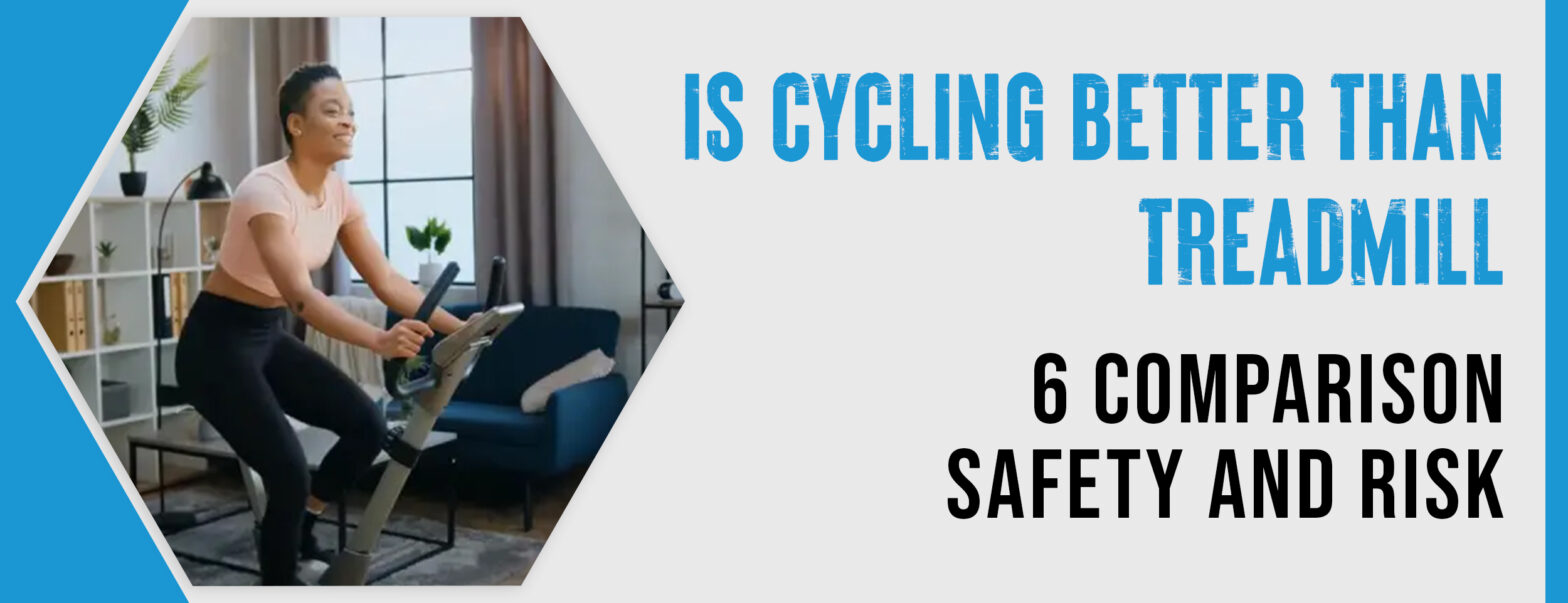Research compared calorie burn rates between treadmill running and exercise biking. Treadmill running clocked in at 490-646 calories per hour, while exercise biking ranged from 478 to 628 calories during the same time frame.
Cycling and treadmill offer unique benefits. While cycling enhances lower body strength with lower joint impact, treadmill workouts focus on cardiovascular fitness and calorie burn. The choice between the two depends on your fitness goals and preferences.
In this blog will explore everything from the cardiovascular benefits to our joints’ well-being, calorie burn rates, and even the psychological effects these workouts provide.
Is Cycling Better Than Treadmill: 6 Comparison
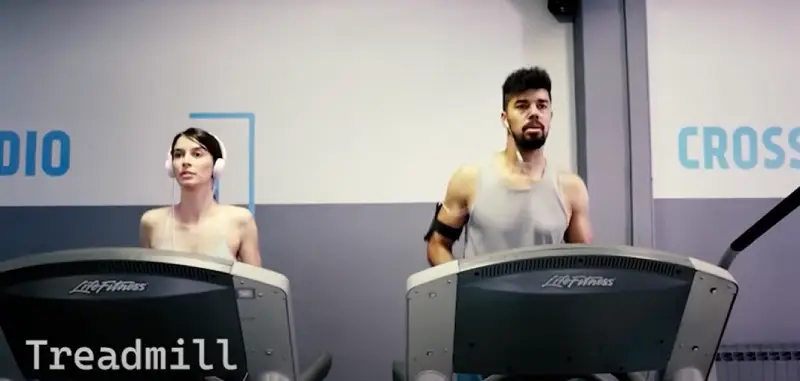
Cycling and treadmill exercises can improve heart health and overall fitness. Gain insights into the distinct benefits and advantages of each activity provides for sustaining a healthy cardiovascular system.
Cardiovascular Improvements: Cycling vs. Treadmill
It is vital to maintain a healthy cardiovascular system, and cycling and treadmill workouts offer significant benefits. This section explores how each activity impacts heart health, supported by relevant statistics and research.
Cycling
- Cycling and Cardiovascular Health: Cycling is renowned for its cardiovascular benefits. Regular cycling can significantly improve your heart health by increasing your heart rate and promoting efficient blood circulation.
- Heart Rate Increase: Engaging in moderate to vigorous cycling can raise your heart rate to the optimal zone for cardiovascular fitness. Increasing heart muscle strength this improves overall heart function.
- Blood Pressure Reduction: Studies show that regular cycling can lower resting blood pressure, reducing the risk of hypertension. Lower blood pressure is key to preventing heart-related diseases.
- Cholesterol Levels: Cycling helps balance good and bad cholesterol levels, supporting overall heart health. This balance is essential to prevent plaque buildup in the arteries, contributing to strokes and heart attacks.
- Statistics and Studies: Regular cyclists have a significantly lower risk of cardiovascular disease, with biking to work reducing heart disease by 46%, as per studies by the British Journal and University of Glasgow.
Treadmill
- Treadmill Workouts and Cardiovascular Health: Treadmill workouts are equally effective for heart health, offering a controlled environment to ensure consistent cardio exercise.
- Heart Rate Control: The ability to adjust speed and incline on a treadmill helps maintain an optimal heart rate for cardiovascular benefits. This control ensures that you stay in the target heart rate zone, maximizing the workout’s effectiveness.
- Caloric Burn: Running on a treadmill burns a high number of calories, which supports weight management and reduces cardiovascular risk factors. Effective weight management is crucial for maintaining heart health.
- Endurance Building: Consistent treadmill workouts build stamina and endurance, key components of cardiovascular fitness. Improved endurance allows your heart and lungs to work more efficiently over time.
- Statistics and Studies: A study from the American Heart Association showed that treadmill running can significantly lower coronary artery disease.
Muscle Engagement: Cycling vs. Treadmill
To optimize your workout routine effectively, analyze the muscle engagement in cycling versus treadmill running. Knowing the specific muscle groups targeted can help steer you towards achieving your fitness objectives.
Comparing Muscle Groups Targeted by Cycling and Treadmill Running
For choosing between cycling and treadmill running, understanding the specific muscle groups each exercise target can be helpful in determining your fitness goals. Both are excellent forms of cardiovascular exercise, but they engage different muscles in distinct ways.
Muscles Worked by Cycling
Cycling primarily focuses on leg muscles and core muscles, making it an effective workout for those looking to strengthen and tone these areas.
- Quadriceps: Located at the front of the thighs, these muscles are heavily engaged during the pedaling motion.
- Hamstrings: Situated at the back of the thighs, they work in tandem with the quadriceps to create a smooth cycle.
- Glutes: The muscles in your buttocks are engaged as you push down on the pedals.
- Calves: The lower leg muscles get a solid workout with each pedal stroke.
- Core Muscles: Your abs and lower back are activated to maintain balance and stability while cycling.
Muscles Worked by Treadmill Running
In contrast, treadmill running offers a more comprehensive full-body workout, engaging both upper- and lower-body muscles.
- Quadriceps and Hamstrings: Similar to cycling, these muscles are engaged during running, but the impact and range of motion differ.
- Glutes: The intensity of glute engagement can vary with incline and speed adjustments.
- Calves: Running on a treadmill requires continuous calf activation for propulsion.
- Hip Flexors: These muscles are more engaged in running as they help lift the knees.
- Core Muscles: Necessary for maintaining posture and balance, especially at higher speeds.
- Upper Body Muscles: While not as intensively worked as the lower body, arm swings engage the shoulders, biceps, and triceps.
Joint Impact: Cycling vs. Treadmill
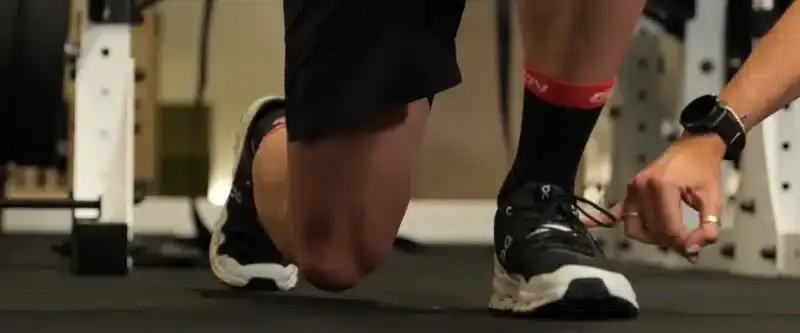
By knowing how each exercise affects your joints, you can be more confident about which one is better suited for your fitness routine.
Cycling Impact on Joints
Cycling is generally considered a low-impact exercise, making it easier on your joints.
- Best Practice: Use proper form and adjust your bike to fit your body.
- Tip: Keep your knees slightly bent during the pedal stroke to avoid straining your muscles.
Treadmill Impact on Joints
It is more stressful on your joints to run or walk on a treadmill than to cycle.
- Best Practice: Select a treadmill with good shock absorption to reduce impact.
- Tip: Use proper running shoes and maintain good posture to minimize joint stress.
Knees and ankles: Which exercise is gentler
When considering joint health, especially for the knees and ankles, it’s important to understand which exercise exerts less stress.
Cycling and Knee Health
Cycling is often recommended for people with knee problems because it places less strain on the knees compared to high-affected activities, like running.
- Best Practice: Ensure proper bike alignment to protect your knees.
- Tip: Adjust the seat height so your leg extends comfortably without locking the knee.
Treadmill and Knee Health
Jogging on a treadmill can strain the knees due to the repetitive impact from each stride.
- Best Practice: Set the treadmill to a slight incline to reduce joint impact.
- Tip: Mix walking and running intervals to lessen the strain on your knees.
Cycling and Ankle Health
Cycling generally poses minimal risk to the ankles as long as your form is correct.
- Best Practice: Make sure your feet are properly positioned on the pedals.
- Tip: Use cycling shoes with good support to stabilize your ankles.
Treadmill and Ankle Health
Running on a treadmill can also put stress on the ankles, leading to potential injuries if not managed correctly.
- Best Practice: Wear supportive shoes to cushion your ankles.
- Tip: Start with a walking warm-up to prepare your ankles for more intense activity.
Weight Loss and Calorie Burn
In fitness, weight loss and burning calories are key goals. Cycling and treadmill workouts provide great opportunities for this. Being aware of their differences can assist you reach the right decision for your fitness goals.
Calorie Expenditure: Cycling vs. Treadmill
There is a wide range of calories burned based on the intensity and duration of the workout. Here’s a look at how cycling compares to treadmill exercises:
Cycling
- Variable Intensity: the advantage of cycling is the ability to easily adjust intensity levels. Whether you’re biking on flat terrain, climbing hills, or sprinting, you can tailor your workout to burn more calories.
- Longer Durations: Because cycling is generally lower impact than running, individuals often find they can sustain longer workout sessions, leading to higher overall calorie expenditure.
- Outdoor vs. Indoor: Outdoor cycling introduces variables like wind resistance and varied terrain, which can increase calorie burn. Indoor cycling classes also often include high-intensity intervals designed to maximize calorie output.
Treadmill
- Consistent Effort: The treadmill provides a controlled environment where you can maintain consistent speed and incline to steadily burn calories.
- High-Intensity Options: Many treadmills come with preset programs that include high-intensity interval training (HIIT), which is highly effective for calorie burning.
- Convenience: Treadmills are widely accessible and convenient for those who may not have the option to cycle outdoors or prefer the indoor setting.
Weight Loss Efficiency: Cycling vs. Treadmill
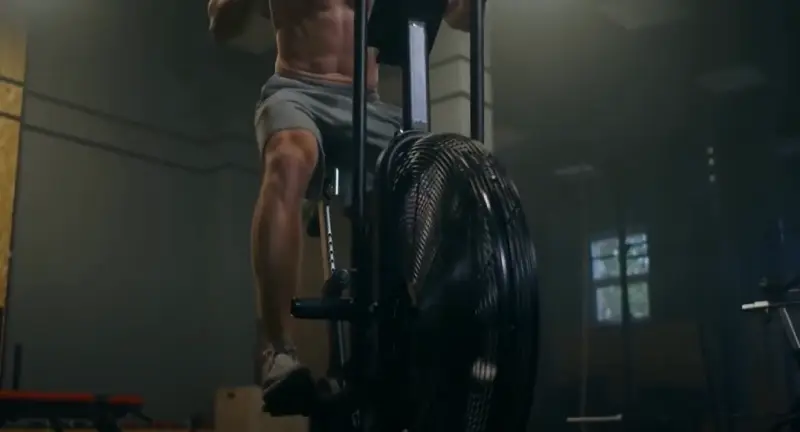
In weight loss, the efficiency of your workout plays a crucial role. Here’s an analysis of which exercise might be more effective for shedding pounds.
Cycling
- Sustainable Long-Term: The lower-impact nature of cycling makes it more sustainable for many people over the long term. This means fewer injuries and more consistency, which is critical for weight loss.
- Muscle Engagement: Cycling engages large muscle groups, particularly in the legs and core, which can lead to increased muscle mass and a higher basal metabolic rate (BMR). A higher BMR means you burn morecalories, even at rest.
- Enjoyment and Adherence: Many cyclists find outdoor biking more enjoyable, which can lead to higher adherence rates. Enjoyment is a crucial factor in maintaining a regular exercise routine, which is essential for long-term weight loss.
Treadmill
- Efficient Workouts: Running is one of the most efficient ways to burn calories quickly. Even short treadmill sessions can yield significant calorie burns, making it an effective option for those with limited time.
- Versatile Programs: Treadmills often offer a variety of programs that can keep workouts interesting and challenging, which helps in overcoming plateaus often experienced in weight loss journeys.
- Accessibility and Safety: For those concerned about safety or weather conditions, the treadmill offers a reliable and controlled environment for consistent exercise.
Convenience and Accessibility
When comparing cycling with treadmill running, it’s crucial to factor in convenience and accessibility. Assessing the practicality of each entails examining the space and equipment requirements. Let’s delve into these facets for a deeper grasp of their convenience.
Practicality: Cycling vs. Treadmill
Evaluating the practicality of cycling and treadmill running involves considering the space they require and the equipment needed for each. Let’s delve into these aspects to understand their convenience.
Cycling
- Outdoor Cycling: Requires a bicycle and access to safe roads or trails.
- Indoor Cycling: Needs either a stationary bike or a cycling trainer that accommodates your regular bicycle.
- Storage: Bicycles, whether outdoor or stationary, take up storage space and may need a dedicated area in your home.
- Maintenance: Regular upkeep is necessary for bicycles, including tire checks, chain lubrication, and brake adjustments.
Treadmill
- Equipment: Requires a treadmill, which can range from compact foldable models to larger, more robust machines.
- Space: Treadmills occupy significant floor space, making them less suitable for smaller living areas.
- Maintenance: Treadmills need periodic maintenance, such as belt alignment and lubrication, but this is generally straightforward.
Indoor vs. Outdoor Options
While outdoor cycling provides varied scenery and terrain for a rewarding workout, it is weather-dependent and demands attention to safety in busy traffic zones.
Cycling:
- Outdoor Cycling: Provides an opportunity to enjoy varied scenery and terrain, which can make workouts more enjoyable. However, this option depends on weather conditions and safety considerations in traffic-heavy areas.
- Indoor Cycling: Offers a controlled environment free from weather-related disruptions. This is convenient for those who prefer consistent workout conditions but may miss the excitement and variability of outdoor cycling.
Treadmill:
- Indoor Running: Enables uninterrupted workouts regardless of weather, making it highly reliable. Modern treadmills come with features like adjustable inclines and pre-set programs to simulate different terrains, adding variety to the exercise.
- Flexibility: Ideal for individuals living in regions with extreme weather or those with unpredictable schedules who need to fit in workouts at any time of day or night.
Cost Considerations

Cycling versus treadmill running, cost is an important factor to consider. Both exercises involve initial investments and ongoing maintenance costs. This section will compare the financial aspects of each exercise to make your decision easier.
Initial Equipment Costs
The upfront costs for both cycling and treadmill running can vary widely depending on the quality and features of the equipment you choose.
Cycling:
- Bicycle: The cost of a bicycle can range from $320 for a basic model to over $3,000 for high-end options.
- Accessories: Additional gear such as helmets, lights, locks, and cycling shoes can add another $100 to $500 to your initial investment.
- Indoor Setup: If you opt for indoor cycling, stationary bikes or cycling trainers can cost between $150 and $1,200.
Treadmill:
- Basic Models: Entry-level treadmills start around $300.
- Mid-range Models: More robust models with additional features like incline settings and advanced displays range from $700 to $1,500.
- High-end Models: Premium treadmills with all the bells and whistles can cost upwards of $2,000.
Maintenance Costs
Both cycling and treadmill running require ongoing maintenance to keep the equipment in good working condition.
Cycling:
- Routine Maintenance: Regular maintenance, including tire replacements, chain lubrication, and brake adjustments, can cost around $50 to $100 annually.
- Repairs and Upgrades: Occasional repairs and upgrades, such as replacing worn-out components, can add another $100 to $300 per year.
Treadmill:
- Routine Maintenance: Including belt alignment and lubrication, typically costs between $100 and $200 annually.
- Repairs and Parts Replacement: Replacing parts like belts, motors, or electronic components can be expensive, ranging from $150 to $500 per incident.
Additional Costs
Consider other financial factors that might come into play:
Cycling:
- Outdoor Cycling: If you cycle outdoors, you may need to invest in clothing for different weather, adding to your overall costs.
- Memberships: Some cyclists take part in group rides or join cycling clubs, which might have membership fees.
Treadmill:
- Electricity: Running a treadmill regularly can increase your electricity bill, though this is generally a minor cost.
- Subscription Services: Some high-end treadmills offer subscription-based fitness programs that provide guided workouts and virtual training, costing anywhere from $15 to $40 per month.
Cycling vs. Treadmill: Psychological Benefits
With choosing an exercise that you can enjoy and stick with in the long run, both cycling and treadmill running offer unique psychological benefits. Let’s explore how each of these activities can enhance your mental well-being and motivation.
Motivation and Enjoyment Cycling
Cycling often takes the crown for enjoyment and motivation. Being outdoors, feeling the wind on your face, and exploring alternative routes can make cycling an exhilarating experience.
This variety and freedom can significantly boost your mood and keep you motivated to ride regularly. Additionally, the scenic beauty and changing landscapes provide a mental escape from daily routines, making it easier to stick with cycling as exercise.
Motivation and Enjoyment Treadmill
Treadmill running, while more static, offers its own set of motivational perks. For those who prefer a controlled environment, treadmills provide consistency and safety. The convenience of being able to exercise regardless of weather is also a significant advantage.
Modern treadmills come with various features like interactive screens, virtual running trails, and performance tracking, which can keep your workouts engaging and help maintain your motivation.
Psychological Benefits Cycling
Rhythmic pedaling can provide mental clarity and freedom and stress relief while riding. Cycling boosts mood, well-being, and self-confidence as you conquer alternative routes and challenges.
- Stress Reduction: Cycling outdoors can be incredibly relaxing and reduce stress levels. The combination of fresh air, nature, and rhythmic pedaling helps clear the mind and release endorphins, the body’s natural feel-good chemicals.
- Increased Creativity: Many cyclists report that riding helps them think more clearly and creatively. Changing scenery and exercising can stimulate the brain and inspire new ideas.
- Social Connection: Group rides or cycling clubs offer a social aspect that can enhance your sense of community and belonging, combating feelings of isolation.
Psychological Benefits Treadmill
Unlock the psychological advantages of treadmill workouts
- Consistency and Routine: The predictability of treadmill workouts can create a comforting routine, which is beneficial for mental health. Knowing exactly what to expect can reduce anxiety and make exercising less daunting.
- Focus and Mindfulness: Running on a treadmill allows you to focus more intently on your form and breathing, promoting mindfulness. This can lead to a meditative state, helping reduce stress and improve mental clarity.
- Progress Tracking: Most treadmills come equipped with features that track your progress, such as heart rate, speed, and distance. Monitoring improvements over time can boost your self-esteem and provide a sense of accomplishment.
Cycling vs. Treadmill: Safety and Risk of Injury
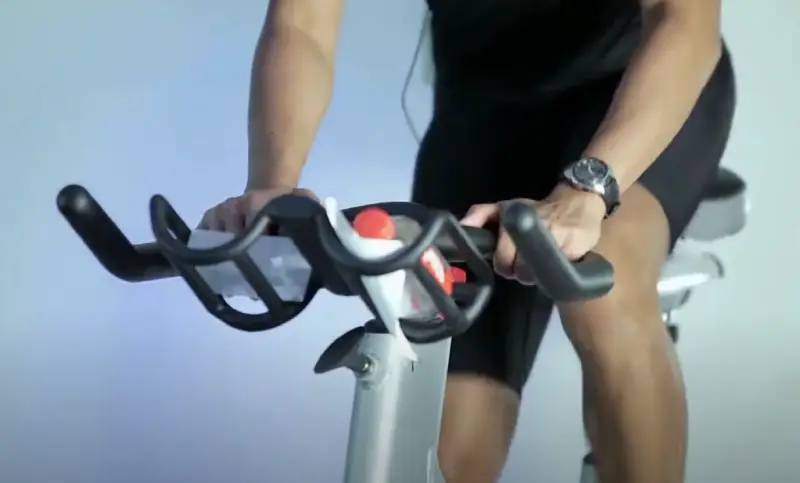
When deciding between cycling and treadmill running, consider the safety and injury risks. Understanding these can help you prevent injuries and choose the best exercise for your health and fitness goals.
Injury Rates of Cycling and Treadmill
With exercise, both cycling and treadmill running have their pros and cons in injury risks. Let’s break it down.
Cycling:
Cycling is considered a low-impact exercise, meaning your joints are less stressed than in activities like running. However, cycling is not without its risks:
- Overuse Injuries: These can occur because of repetitive motion, particularly affecting the knees, hips, and lower back.
- Accidents: Outdoor cycling carries a risk of accidents because of falls, collisions with vehicles, or obstacles on the road.
- Postural Issues: Poor bike fit or riding posture can lead to discomfort and chronic injuries.
Treadmill:
Running on a treadmill is also a popular form of cardiovascular exercise, but it comes with its own set of injury risks:
- Impact Injuries: The repetitive impact on the knees, ankles, and hips can lead to overuse injuries such as shin splints, runner’s knee, and plantar fasciitis.
- Falls and Trips: Although treadmills are stationary, there’s still a risk of falling, especially if you’re distracted or misstep.
- Muscle Imbalances: Continuous running in the same plane can lead to muscle imbalances.
Tips for Avoiding Common Injuries
Check out injury prevention tips for cyclists and treadmill fans! Explore bike fit, footwear, warm-up routines, and equipment maintenance. Stay safe and avoid workout injuries.
Cycling:
- An accurate bike fit: Adjust your bike appropriately for your body size. Seek professional fitting if necessary to avoid strain on your knees, back, and wrists.
- Personal Protection Gear: Always put on a helmet and wear padded gloves and shorts to minimize the risk of injury from falls.
- Warm-Up and Stretch: Incorporate a proper warm-up and stretching routine before and after your rides to maintain flexibility and reduce muscle tension.
- Gradual Progression: accumulate your cycling intensity and distance to avoid overtraining and overuse injuries.
- Maintain Your Bike: Make sure your bike receives regular care to verify it is safe to ride.
Treadmill:
- Proper Footwear: Invest in good quality, comfortable running shoes to reduce the risk of impact injuries.
- Warm-Up and Cool-Down: Just like with cycling, warming up and cooling down will prepare your muscles and joints for the workout and aid recovery afterward.
- Monitor Your Form: Pay attention to your running form. Keep your posture upright, avoid overstriding, and land gently to minimize joint stress.
- Use Safety Features: Utilize the treadmill’s safety features, such as the emergency stop clip, to prevent accidents.
- Vary Your Routine: Incorporate cross-training and strength training into your fitness routine to balance muscle use and reduce the risk of overuse injuries.
Conclusion
Witness the exhilarating journey of Cycling vs. Treadmill coming to a close. Both offer significant fitness benefits, promoting heart health, muscle engagement, joint impact, calorie burn, and weight loss.
Yet, factors like practicality, cost, and enjoyment are equally pivotal. Remember, the most effective workout is the one that brings you joy and consistency. Whether you savor the gentle breeze of a bike ride or the rhythmic sound of a treadmill, both paths lead to a healthier, happier you.
There’s no definitive victor in this comparison—preference and commitment reign supreme. Select your workout, find your rhythm, and pursue your fitness aspirations in your own distinctive manner.
FAQs
Is Cycling Good For Your Stomach?
Cycling is beneficial for reducing belly fat over time. Regular cycling can aid in overall fat loss and maintaining a healthy weight. Moderate-intensity aerobic exercises like cycling, whether indoors or outdoors, effectively help decrease belly fat and trim the waistline.

